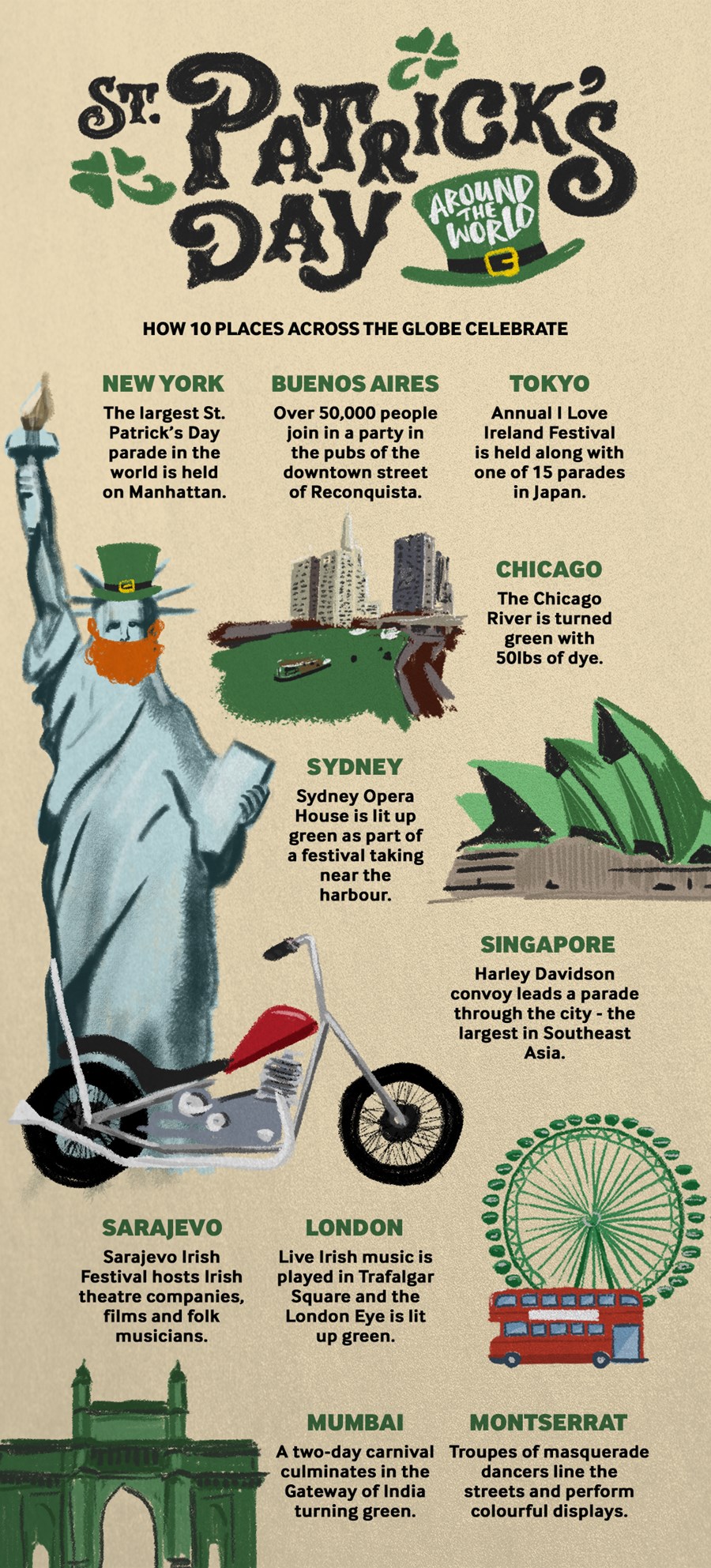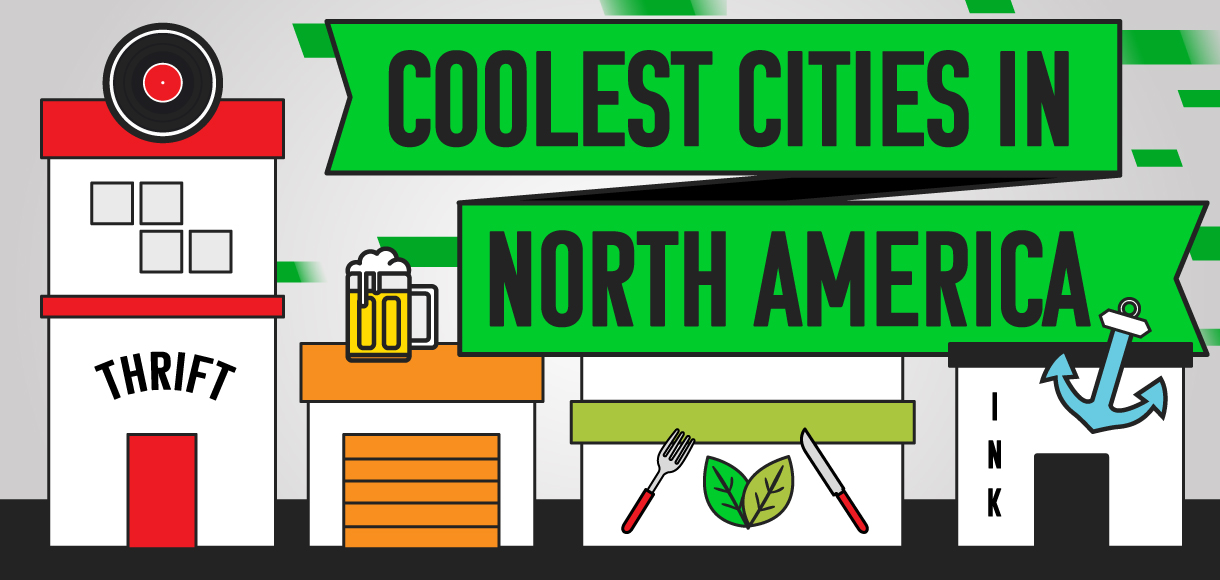How St. Patrick's Day went global

With the day celebrated by millions across the globe, we look how Ireland's patron saint became so popular.
It’s the patron saint’s day you have probably celebrated more than any other, even if you’re not Irish.
Whether it’s dying your hair green, getting stuck into a traditional jig or just downing a pint of the black stuff on 17 March, the chances are that you have taken part in the festivities at some point in your life.
You’re not alone, either. With research from Betway online casino, we look at why St. Patrick’s Day is a public holiday in four countries and is widely celebrated in many more.
It is estimated that 149 million people in the USA alone celebrated the day in 2018, while a year later 400 landmarks in over 50 countries were illuminated in green to mark the occasion, including the Leaning Tower of Pisa, Sydney Opera House and the Great Wall of China.
That’s despite the Republic of Ireland and Northern Ireland having a combined population of just 6.8 million – for context, that’s less than 0.01 per cent of the world.
For a celebration based on the life of a fifth-century Christian missionary, that is some going.
When recounting the live of historical figures from such a long time ago, the lines between real-life and apocryphal tales can often get blurred.
While it’s doubtful whether Saint Patrick really did drive the snakes out of Ireland – owing to the lack of snakes in the country in the first place – it’s clear that he still retains strong legacy on the Emerald Isle and beyond.

Originally born in England, he is credited with bringing Christianity to Ireland before his death on 17 March 461 AD – the same day on which his life is celebrated across the world.
But it wasn’t until 1601 that the first recorded St. Patrick’s Day parade took place, in Florida rather than Ireland, with the patron saint’s day only officially added to the calendar of the Catholic church in the 1630s.
From the 17th century onwards, the USA has been a popular destination for Irish settlers and their imprint is still visible today with more than 32 million Americans identifying as being Irish in the 2019 census.
Given their representation across the pond, it is no surprise that the first St. Patrick’s Day parade was held in New York City as early as 1762 – that’s 14 years before the Declaration of Independence was signed.
It’s said that the event was organised by homesick Irish soldiers who were serving in the British army.
Among plenty of other festivities, participants revelled in the freedom to wear green – a sign of Irish solidarity and pride that, at the time, had been banned in Ireland.
That isn’t the only St. Patrick’s Day tradition that was popularised elsewhere.
Until recently, the celebrations had been largely influenced by those among the Irish diaspora rather than within Ireland themselves.
An estimated 40 per cent of Irish-born people were living abroad in 1890, so the desire to trumpet their national identity and culture is understandable.
In any case, St. Patrick’s Day did not even become an official holiday in Ireland until 1903, and it took until 1931 for the first parade to take place.
Lent restrictions on consuming alcohol are also traditionally lifted for the day, which has resulted in drinking becoming an integral part of almost any celebration.
Today, you’re guaranteed to be within stumbling distance of a pint of Guinness at any St. Patrick’s Day shindig, but that wasn’t always the case in Ireland. From 1927 to 1961, the sale of alcohol was banned on St. Patrick’s Day.
In normal times, approximately 500,000 people visit the St. Patrick’s Festival every year in Dublin, spending €74m across the five-day period.
The Irish capital is far from the only place that goes green on 17 March, though.

It should come as no surprise that the huge Irish contingent in North America also go big when the time comes.
New York City is home to the world’s largest St. Patrick’s Day parade, which typically includes 150,000 marchers from bands, the police department and fire department among others.
In Chicago, meanwhile, 50lbs of green dye is dumped into the river to give it an emerald hue.
Overall, an average St. Patrick’s Day in the USA will see 13 million pints of Guinness drunk and $6.16bn spent across the country, including $133m on imported cabbage, obviously.
London’s party culminates in a live music performance in Trafalgar Square or, if culture’s more your thing, Sarajevo Irish Festival hosts Irish theatre companies, folk musicians and cinema.
Celebrations aren’t just limited to the western world either, with Tokyo, Mumbai and Buenos Aires all among the cities across the globe that mark the occasion.
Perhaps the most surprising of all places that celebrate St. Patrick’s Day, though, is the island of Montserrat – a British Overseas Territory known as the Emerald Isle of the Caribbean.
Montserrat’s Irish heritage dates back to the 17th century, when it became a popular destination for Irish Catholics who had been persecuted after being banished by Oliver Cromwell.
In 1678, a census showed that more than half of people living on the island were Irish.
Nowadays, Montserrat throws a 10-day festival to honour St. Patrick, who is also the island’s designated patron saint, which includes a masquerade dance troupe during the parade.
More recently, it has been difficult to celebrate St. Patrick’s Day in the ways most people are accustomed to, and the usual events have had to be muted.
But that doesn’t mean the celebration will be any less of a global phenomenon when normality resumes.
With 80 million people across the world claiming Irish ancestry as of the 21st century, that is one thing you can be certain of in unprecedented times.




































